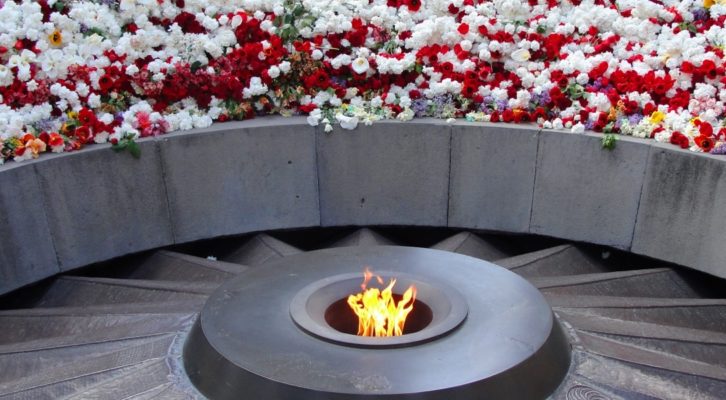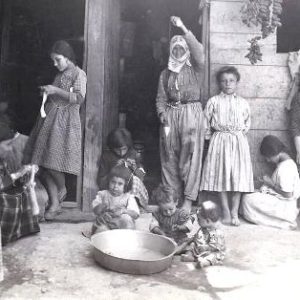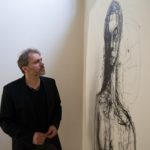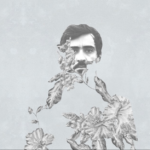April 24 marked the 102nd anniversary of the 1915 Armenian Genocide. Armenians around the world – as well those in the international community who care about human rights – remembered the 1.5 million victims of the genocide and paid homage to their legacy. The Armenian Genocide began on April 24, 1915, when the Ottoman Turkish government ordered the deportation of approximately 250 Armenian intellectuals.
In the meantime, Turkey has been in a period of political turmoil – particularly following last year’s abortive coup. Since then, the mass dismissal of academics from universities seems to have become the norm in Turkey. According to the Turkish BIA news network, 4,811 academics from 112 Turkish universities have been discharged by five statutory decrees declared during the state of emergency. Fifteen universities have been closed.
But the real purging – and the ensuing destructive campaign against educators and schools – targeted the Armenian community, peaking in 1915.
“Before World War I, more than 1,996 Armenian schools with 173,022 pupils functioned in the Ottoman Empire,” the Armenian Genocide Museum-Institute reported.
While all of these abuses were taking place, the vast majority of the Turkish public was either silent or complicit.
“The first Armenian schools in the Ottoman Empire were established in 1790. Permission for building Armenian educational and cultural institutions was acquired with great difficulty. From the middle of the 19th century, unisex colleges were opened in all the provincial centers and villages of Western Armenia,” which is what the Armenian highlands within Turkey’s borders are called.
In 1915, the Ottoman Young Turk government engaged in a genocidal campaign against Armenian communities, who had been residing in what was then the Ottoman Empire for millennia. First the Ottoman state, then the Turkish nationalist movement incited Muslim populations to commit horrific atrocities against the Armenians and other Christians from 1914–1923. According to Professor Israel Charny, a prominent genocide scholar and the editor of the two-volume Encyclopedia of Genocide, more than 3.5 million Armenian, Assyrian and Greek Christians perished in the genocide.
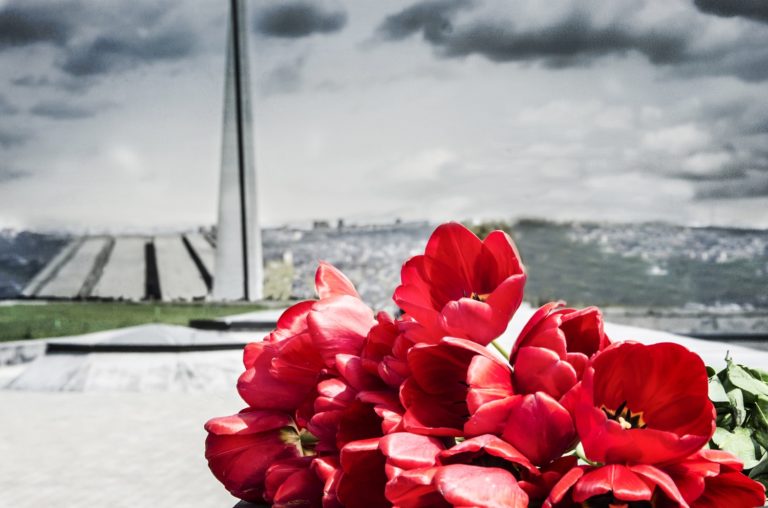
Red tulips in Tsitsernakaberd, Armenia with the Armenian genocide memorial in the background.
During and after the genocide, many properties belonging to Armenians and other Christians – including schools and other educational facilities – became “lost” or were stolen.
The researcher Raffi Bedrosyan wrote, “All of these assets, except the two hospitals and some of the Istanbul Armenian churches and schools, disappeared after 1915. If not destroyed outright or left to deteriorate, the church and school buildings were converted into banks, mosques, state schools, community centers, stables or warehouses.”
In June 1915, the Ottoman Directorate for the Settlement of Tribes and Immigrants ordered Armenian educational commodities to be provided for Muslim settlers: “It is necessary to appropriate the schools of the towns and villages that have been emptied of Armenians to Muslim immigrants to be settled there. However, the present value of the buildings, the amount and value of its educational materials needs to be registered and sent to the department of general recordkeeping.”
Scholar Uğur Ümit Üngör said that “this national order was a warrant for the seizure of all Ottoman Armenian schools and their conversion into Ottoman-Turkish schools. School benches, blackboards, book cabinets and even paper and pens were allocated to the yet-to-arrive settlers.”
Abraham Harutiunian, a priest who lived in Zeitun (today’s Turkish town of Süleymanlı in Kahramanmaraş province) noted in his memoirs that the town’s school was confiscated by the government. “The Armenians no longer had any right to education,” he said, “and the campus was now filled with hundreds of Turkish children.”
The confiscation of Armenian schools continued for decades – even after the founding of the Turkish republic in 1923.
In 1936, the Turkish government requested that minority foundations provide a list of their own assets and properties. In 1974, new legislation was passed, banning non-Muslim trusts from owning more property than that which had been registered under their name in 1936.
“The Turkish government continued the seizure of Armenian assets and the legalization of it up until the 2000s,” Bedrosyan wrote. “With legislation brought in 1974, more than 1,400 legally obtained assets of the Istanbul Armenian charitable foundations since 1936 were declared illegal and seized by the state.”
In 2002, Dr. Tessa Hofmann, a scholar of Armenian studies, wrote a comprehensive report titled “Armenians in Turkey Today.” In it, she described the significance of the Armenian schools for the protection of the Armenian identity in Turkey:
“Under the provisions of the Treaty of Lausanne, Armenians in Turkey are not seen as an ethnic minority, but rather as a religious, i.e. non-Muslim, minority. Their minority rights therefore only encompass the maintenance of the Armenian language to the extent that it is part of the Armenian Apostolic or Uniate Armenian rites.
The church and private Armenian schools thus represent the most important institutions for the preservation of Armenian religious as well as cultural identity. Meanwhile, over the decades, legal and administrative restrictions have led to a continuous erosion of their ability to operate.
Schools are subjected to abusive interference concerning the education of teachers. The number of weekly hours teaching is allowed in the Armenian language – who is and is not allowed to attend an Armenian school or how schools are run. For instance, the authorities can and do paralyze the operations of schools at will. Violent attacks on schools also occur on occasions, though they are more often targeted at churches or cemeteries.”
For example, during the anti-Greek pogroms of September 6–7, 1955, 32 Greek and eight Armenian schools were destroyed by Muslim mobs. From 1992–1994, a new wave of violence against Armenian schools in Istanbul broke out when the post-Soviet Republic of Azerbaijan once again failed to recapture Karabakh, or Artsakh, a historically Armenian land. In January 1994, Turkish professor Baskın Oran said that Armenian schools and churches were stoned and shot at.
A 2013 report by Turkey’s History Foundation, “The Minority Schools from Past to Present,” echoed the problems mentioned in Hofmann’s 2002 article: “The parents who are citizens of Turkey have to prove that their children are Armenian, Greek or Jewish. If Armenian or Greek children are registered as Muslim in their ID cards, it is never possible for them to register at minority schools.”
The report emphasized the fact that since the early years of the republic, the schools of minority citizens were seen as “sources of mischief that promote divisive ideas.” It also quoted the correspondence of the officials of the Turkish ministry of national education as evidence.
According to that report, there are no departments at universities that train Armenian or Hebrew teachers, and the “principle of equality” guaranteed by the 1923 Lausanne Treaty is not practiced by Turkey.
A participant of the report said, “The 1970s were even more difficult. The children were put through an investigation of history file. Sometimes they were found out to be Muslim a generation ago – that is, they had been forcibly Islamized for a while, but then returned to their true identities and nationalities. But they were not accepted as minority citizens. So many problems were experienced.”
The report added that the schools of Armenians, Greeks and Jews have “melted” in 90 years after the founding of the Turkish republic in 1923: “In the Ottoman Empire, there were 6,437 minority schools, and in Istanbul alone, there were 302. Between 1894 and 2013, 6,415 minority schools were closed down. There are only 22 minority schools in Istanbul today. Sixteen belong to Armenians. All of the minority schools across Anatolia have been closed down.”
It is still difficult for the Armenian community, which numbers around 60,000, to maintain its schools as the Armenian population keeps declining. Even today, pressure on the community is the norm. Racist and hate-filled graffiti were written on the walls of several Armenian schools in Istanbul just last year.
Sadly, while all of these abuses were taking place, the vast majority of the Turkish public was either silent or complicit. The mainstream media also turned a blind eye or even incited the Turkish public to commit more atrocities against minority citizens.
A slightly different version of the famous statement by Pastor Martin Niemöller about the cowardice or complicity of Germans following the Nazis’ rise to power and subsequent purging of their chosen targets seems quite relevant for Turkish people who are now targeted by their own government:
“First they came for the Armenians, and I did not speak out – because I was not an Armenian.”
The article was originally published at www.philosproject.com 26/4/2017
Uzay Bulut is a Turkish journalist formerly based in Ankara. She is presently in Washington, D.C. Follow her on Twitter at twitter.com/uzayb


